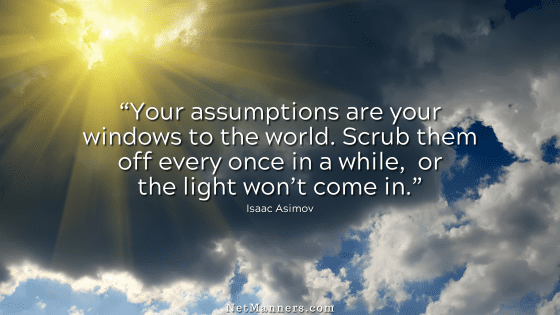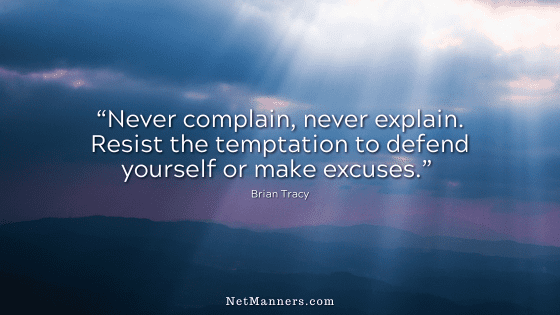Jumping to Conclusions in Email

Have you ever heard the saying, “Thou protest too much?” What that saying implies is that by protesting too much about something, you are, in fact, showing your true colors about the topic that you are so emotional about.
The same goes for email.
Sometimes, when you jump to conclusions or protest too much, you are saying quite a bit more than you probably want to about the kind of person you are, including what you think about others.
Pause Before Jumping to Conclusions
Here’s an example of how jumping to incorrect conclusions can cause you to create a negative impression. Or reflect that you can’t stop thinking about yourself long enough to see the “forest through the trees.”
I was contacted by an individual who wanted to interview me for an article in a big-name magazine. I immediately replied and stated that I looked forward to working with them on their project.
Moments later, down comes a second email from this individual.
They received my automated response I had at the time that was sent to website inquiries. This quick message clearly stated at the top that it was just that—an automated response. My second personal response would have arrived within minutes after that.
The autoresponder explains that due to all the spam, off-line etiquette questions, and emails from students who want answers to their homework instead of reading my site, not to expect a response to off-line etiquette or homework-related questions.
The second email from this person was very condescending. They chose to take my autoresponder personally. They responded, “Didn’t I know who they were, or have I not heard of ‘magazine name’?”
Wow…
This person was not asking an off-line etiquette question, nor were they a student trying to avoid doing their homework. So why such a visceral reaction?
They didn’t read the entire email. If they had read the auto-response, which concluded, “Otherwise, I will be in touch shortly,” they wouldn’t have jumped to this conclusion. But they didn’t hesitate to react emotionally.
I wonder what they thought when, moments later, they received a friendly personal response addressing the specifics they had inquired about. I’ll never know because they did not reply.
Don’t Infer What’s Not There
This is a perfect example of how someone can read into an email what isn’t there or intended—by reading more into it than the words actually state, by putting their ego into a message that had nothing to do with them.
There was no reason to jump to the conclusion they did. They choose to flex their ego in a way that certainly doesn’t leave them in an attractive light.
Before you respond…
So don’t jump to conclusions or make assumptions beyond the typed words. Be careful not to read meaning or intent that is not clearly implied. If ever in doubt as to someone’s aim or purpose, just ask!
Doing so will avoid unnecessary misunderstandings, embarrassment, or poor perceptions. If you make this mistake, do not hesitate to humbly apologize without excuses.
I’ll close with another saying. “Better safe than sorry.”






